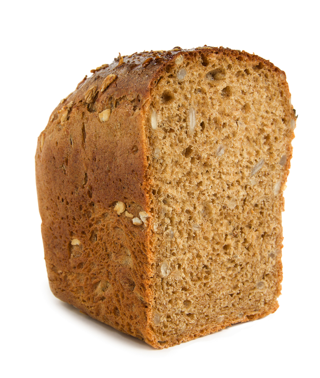
Numerous studies show a strong link between gluten intolerance and Hashimoto’s disease, an autoimmune disease that attacks the thyroid gland, causing hypothyroidism. This is because gluten has a molecular structure that closely resembles thyroid tissue — gluten sensitivity triggers an attack on the thyroid gland. Gluten (technically, the correct term is gliadin), is the protein found in wheat and wheat-like grains, such as spelt, kamut, rye, barley, triticale, and oats.
One of the immune system’s primary jobs is to protect the body from foreign invaders. Sometimes it may recognize a common food as a dangerous invader. When you eat that food throughout each day this can keep your immune system engaged in constant battle, making it hyper zealous, overly sensitive, and thus prone towards food sensitivities and autoimmunity.
Some people also have celiac disease, disease in which gluten triggers an autoimmune attack against the gut, the skin, or neurological tissue. Gluten sensitivity is more common than celiac disease, however, both show up in higher numbers in people with Hashimoto’s hypothyroidism.
If you have been diagnosed with hypothyroidism you should first test for Hashimoto’s by screening for TPO and TGB antibodies — the majority of hypothyroidism cases are caused by Hashimoto’s.
You should also screen for gluten intolerance or celiac disease given how common these conditions are in patients with Hashimoto’s. Likewise, people who discover they are gluten intolerant or have celiac disease should screen for Hashimoto’s.
It’s important to give up gluten completely if you have Hashimoto’s and gluten intolerance. Cheats and little bites are not ok as they trigger an immune response that ultimately destroys thyroid tissue. Also, it’s important to avoid foods that have been contaminated by gluten. Be careful when in a kitchen where gluten is used, with restaurant food, or with questionable packaged foods.
Cyrex Labs offers testing to identify gluten intolerance. However, sometimes the immune system can be so depleted that it produces too few antibodies to produce a positive test, even though you react to gluten. You can screen for this with a total immunoglobulin test.
However, given the evidence establishing a link between gluten intolerance and Hashimoto’s disease, you may be surprised how much better you feel by simply removing gluten from your diet as a start.
Many people have to remove other foods as well, such as dairy, eggs, or other grains. Following the autoimmune paleo diet for about a month and then reintroducing restricted foods one at a time every 72 hours can help you determine which foods trigger an inflammatory reaction in you.
Many people are able to put their hypothyroid symptoms into remission simply by following a diet that eliminates gluten and other trigger foods. Although autoimmune diseases such as Hashimoto’s can be successfully managed through diet and lifestyle strategies, it’s important to understand they can’t be cured. It’s just a matter of taming the immune system.
Ask my office for ways to manage your autoimmune Hashimoto’s hypothyroid condition.





Latest from the Blog
The Death of Red Dye #3
January 15, 2025What Is Red Dye No. 3? Red Dye No. 3, or Erythrosine, is a synthetic food color derived from coal tar. It was first approved by the FDA in the 1950s and quickly became one of the most popular artificial colors in food and cosmetics. Red Dye No. 3 was used in everything from candies, […] Read more
Latest from the Blog
Do You Know What Is In Your Protein Powder?
What’s Really in Your Protein Powder? Understanding the Risks Protein powders are a staple in many health-conscious diets, from athletes seeking muscle recovery to those simply aiming to boost their daily protein intake. With a wide variety of options available, choosing the right one can feel overwhelming. However, recent findings have raised concerns about what’s […] Read more